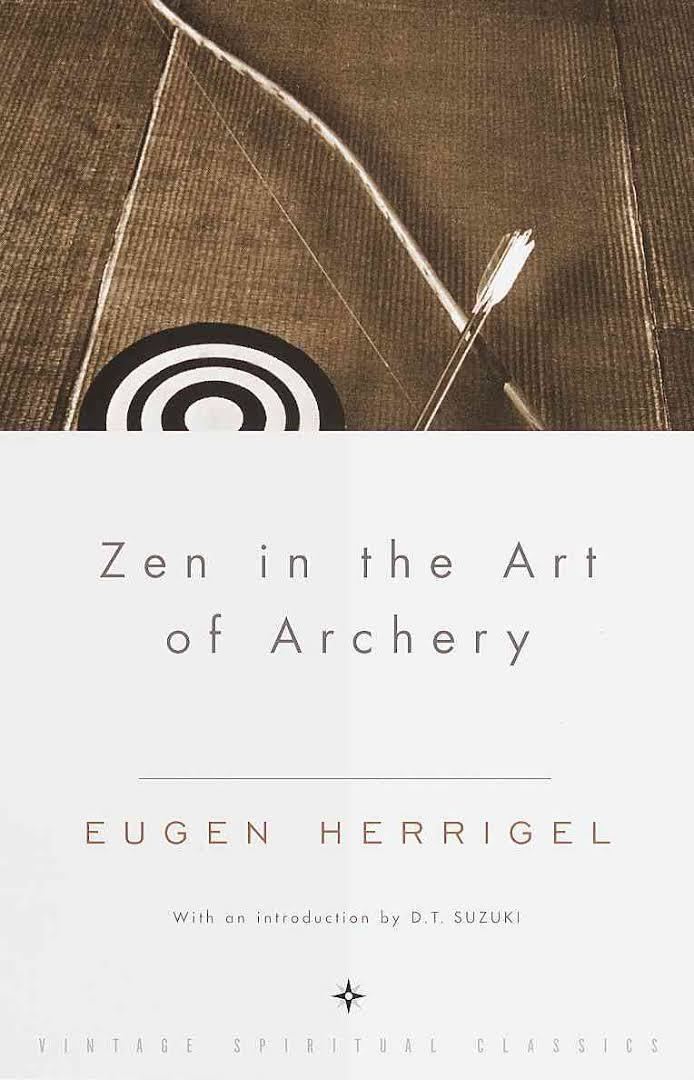8 /10 1 Votes8
Cover artist Joseph del Gaudio Language German Copyright date 1953 OCLC 40962313 | 4/5 Goodreads Country Germany Genre Philosophical fiction | |||||||||||||||||||||||||||||||||
 | ||||||||||||||||||||||||||||||||||
Published Pantheon BooksVintage Books Similar Philosophical fiction books, Archery books | ||||||||||||||||||||||||||||||||||
Book review of zen in the art of archery by eugen herrigel
Zen in the Art of Archery is a short book by German philosophy professor Eugen Herrigel, published in 1948, about his experiences studying Kyūdō, a form of Japanese archery, when he lived in Japan in the 1920s. It is credited with introducing Zen to Western audiences in the late 1940s and 1950s.
Contents
- Book review of zen in the art of archery by eugen herrigel
- Zen in the art of archery by eugen herrigel audiobook excerpt
- Origin
- Book
- Influences
- References
Zen in the art of archery by eugen herrigel audiobook excerpt
Origin
Herrigel (1884–1955) was a German professor of philosophy, with a special interest in mysticism. From 1924 to 1929 he taught philosophy in Japan, and studied Kyūdō (the art of the Japanese bow) under a master named Awa Kenzô. Awa taught kyūdō in a way that was regarded by some as a mystical religion, called Daishadokyo. Daishadokyo was an approach to kyūdō that placed great emphasis on the spiritual aspect and differed from much of the mainstream practice at the time. In 1936, Herrigel wrote a 20-page essay about his experiences, and then in 1948 expanded the essay into a short book. The book was translated into English in 1953 and Japanese in 1955.
Book
The book sets forth theories about motor learning. Herrigel has an accepting spirit towards and about unconscious control of outer activity Westerners heretofore considered wholly to be under conscious-waking control and direction. For example, a central idea in the book is how through years of practice, a physical activity becomes effortless both mentally and physically, as if our habit body executes complex and difficult movements without conscious control from the mind.
Herrigel describes Zen in archery as follows:
Influences
Herrigel's book may have inspired Tim Gallwey's 1974 book The Inner Game of Tennis. Both Herrigel and Gallwey approach sport and life as opportunities for learning inner cooperation. Zen in the Art of Archery also relates to the "inner child" idea in humanistic psychology. Later literature either discusses balancing the "inner game" and the "outer game" or counseling approaches to accessing, communicating and collaborating with the inner child beyond sports.
The title "Zen in the Art of Archery" most likely inspired the titles of many other works, either directly or indirectly. Foremost among these is Robert Pirsig's 1974 book Zen and the Art of Motorcycle Maintenance. More than 200 works have been created with similar titles, including Ray Bradbury's 1990 book Zen in the Art of Writing, as well as Zen and the Art of Poker, Zen and the Art of Knitting, Crazy Legs Conti: Zen and the Art of Competitive Eating, and so on.
J.D. Salinger's fictional character "Seymour Glass" applied one aspect of Zen archery—aiming by deliberately not taking aim—to playing the children's game of marbles.
The wider theme of many of these works is that doing an ordinary task, such as fixing a motorcycle, can have a spiritual dimension.
